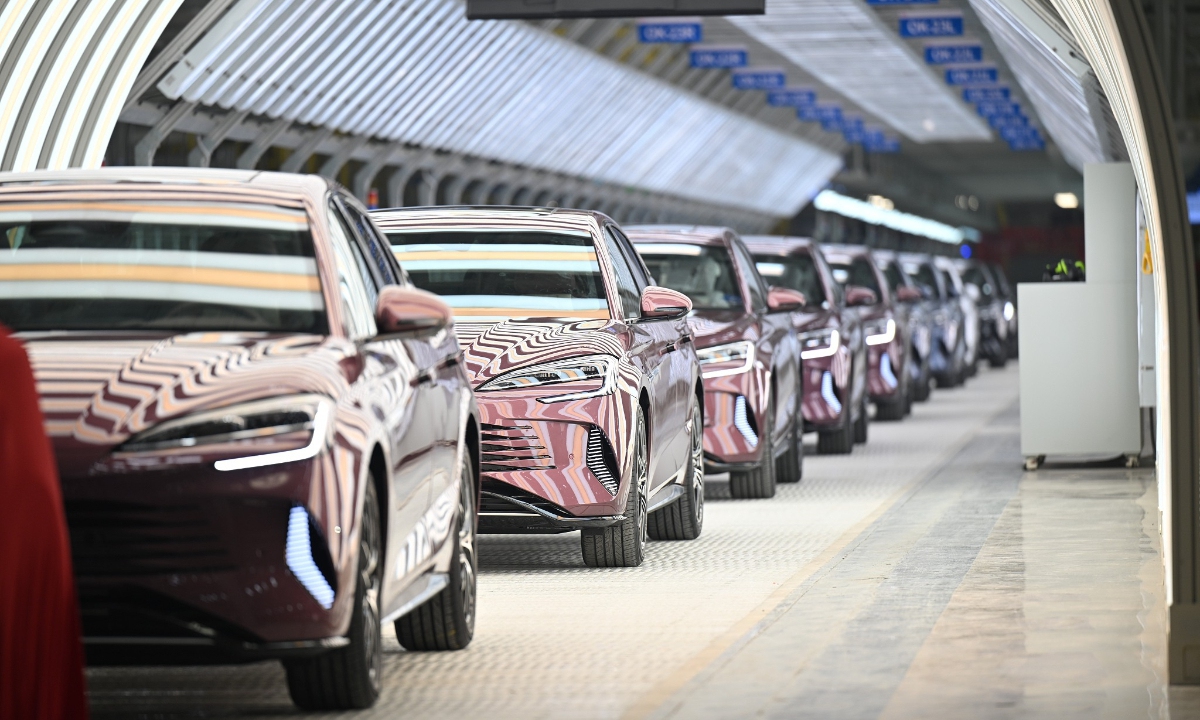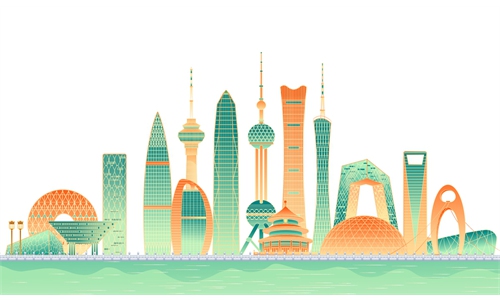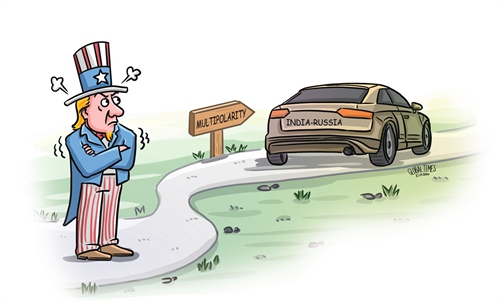No ‘overcapacity’ in China’s new-energy sector as demand outweighs supply
Frontier for green transition

EV Photo:VCG
Opening up to a global market is always a tricky problem. This covers multiple aspects, from commodity trade to foreign investment to financial market reforms and governance. Combining our research paper with future projections, I may conclude: in the long run, there are no visible signs of production overcapacity in the new-energy sector, as demand will far outweigh supply. With the Belt and Road Initiative (BRI), China can help other developing countries and transform their lives through our own experience in industrialization.
China's new energy industry is in the midst of an expansion cycle, and growing rapidly. The most important reason for this expansion is due to global long-term demand. For example, global annual car sales are equal to around 90 million units, with currently around 20 million new-energy vehicles in use today. Based on mutual agreements by most of the countries, by 2040, we will have stopped producing all gasoline vehicles and then replace them by new-energy vehicles. If you strictly adhere to this calculation, the annual growth rate of new-energy vehicles, which amounts to the total demand, is very large. We can conclude, therefore, that the demand gap is, and will remain, enormous.
The key is to examine these complex issues over a longer time frame. If we look at the long-term problems, I feel that within China's new energy industry, there is no issue over long-term overcapacity.
Let's talk about long-term production overcapacity issues. My main view is that every industry has a life cycle. The expansion reaches its peak and then it declines. The life cycle for different countries is not the same. Due to the international specialization, for example, the US manufacturing industry began to decline in the 1990s. We estimate that the global new energy investment is short of $6 trillion per year until 2030. So, in this sense, in the long run, our global demand is greater than global production capacity, including China's production capacity. So, I can say that the overcapacity in new energy sector does not exist in the long run. Of course, the product life cycle is different in different countries.
Let me share a quick data review here to evaluate from a demand-supply perspective: In 2023, global sales of new-energy vehicles reached 14.65 million units, an increase of about 42 fold from 2014. According to a study by the International Energy Agency (IEA), global sales of new-energy vehicles will need to reach 45 million in 2030, more than triple the 2023 figure. It is expected that by 2030, the global demand for power batteries will reach 3500GWh, which is quadruple the global shipments in 2023, both far exceeding the current global supply capacities. This answers quantitatively the question of production overcapacity in new energy sector.
Now, you may ask: are there no overcapacity issues? Let me give you an example first: In the 1990s, Chinese textile industry has a capacity adjustment period, which was to dismantle low-quality and outdated textile pressing techniques. The old textile mills were destroyed because we felt there was overcapacity using outdated equipment.
This was a misallocated overcapacity back in time and then at that time it was very clear that we called it "outdated overcapacity". Because of the abolition of global textile quotas, China's demand for textiles has increased greatly which immediately led to more than 12 million advanced textile factories, which produced high-quality clothing. In fact, the new capacity has replaced the old capacity which echoes our large-scale "trade-in" program that was recently implemented.
Every time we see this "production overcapacity" argument, we clearly emphasize that it is possible, but many global media outlets seem to have overlooked the fact that the overcapacity we have is "outdated overcapacity", meaning that there is no overcapacity when it comes to innovation and use of new technology. They get confused over these two issues: first, there is no long-term overcapacity and second, there is the "overcapacity of polluting" in the outdated technology. From around 10 years ago, the cement and steel industry, which included elements of the fossil fuel industry, created highly polluting sectors. It is very clear that there is excess capacity in the outdated sector that we are dealing with globally. We never stated that there are overcapacity issues in the advanced sector. In my view, new energy capacity shall replace fossil energy capacity in the long run.
With that said, on a global scale, the whole energy industry's overcapacity is in the fossil fuel space. The US needs to reduce excess capacity in fossil fuels, while Europe also needs to follow suit. New energy capacity is insufficient, so don't get confused and think that the capacity utilization rate is low. To summarize: similar to what we had been dealing with in the 90s, the overcapacity exists in the outdated technology, and is replaced by new technology. Now the new energy sector is rising, short of supply, is to replace the outdated fossil fuel energy. The overcapacity problem exists in the fossil fuel energy industry, not the new energy industry.
Step by step, we could support the BRI partner countries to achieve industrialization following the development path China has gone in the past 20 years, skipping right over fossil energy and transitioning directly into new energy. Most BRI partner countries currently face electricity shortages. In many Latin American and African countries, most people can't afford to take hot showers. Our new energy innovations can make it possible for them to take a shower with solar water heaters. We help them install solar panels even though they are unable to do so. It is a huge market demand, at the same time, climate change itself is urgently needed to be resolved for BRI partner countries. In this regard, there is huge potential to develop this regional market.
I can only say that it is from the perspective of solving the practical needs of developing countries and improving their living standards. On the other hand, we can go back and look at China's successful experience in transitioning to both new electric power and new-energy vehicles. Developing countries such as Vietnam, Malaysia, Indonesia, or Latin America are in our level of development when we were 10-20 years ago. There is demand for, for example, a solar water heater. Those countries can simply copy over the development path in China, and then they can go and develop it themselves.
The author is chair professor of Finance at Tsinghua PBCSF and director of Center for International Finance and Economic Research of Tsinghua NIFR. bizopinion@globaltimes.com.cn



